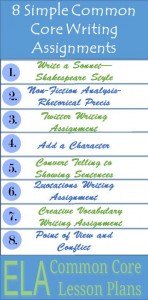Teacher’s Valentine’s Day Love Poems
Trick your students into learning the elements of poetry on Valentine’s Day by teaching these classic love poems
Beat! Beat! Poetry Lesson Plans
Save your Of Mice and Men and Night lesson plans for another day. Your students aren’t paying attention anyway. This is not the day for “The Black Cat” or “The Tell-Tale Heart.” It’s Valentine’s Day, so why not teach them poetry with these descriptions and lesson plans for love poems.
ELA Common Core Standards Covered
Teaching poems by Walt Whitman covers the following ELA Common Core Standards. This is for your administrator, not your kids. Kids need student-friendly worded objectives.
- RL.9-10.1 Cite strong and thorough textual evidence to support analysis of what the text says explicitly as well as inferences drawn from the text
- RL.9-10.10 By the end of grade 9, read and comprehend literature, including stories, dramas, and poems, in the grades 9-10 text complexity band proficiently, with scaffolding as needed at the high end of the range. By the end of grade 10, read and comprehend literature, including stories, dramas, and poems, at the high end of the grades 9-10 text complexity band independently and proficiently.
- L.9-10.5 Demonstrate understanding of figurative language, word relationships, and nuances in word meanings.
- L.9-10.5a Interpret figures of speech (e.g., euphemism, oxymoron) in context and analyze their role in the text.
- Common Core Writing Standard 1. Write arguments to support claims in an analysis of substantive topics or texts, using valid reasoning and relevant and sufficient evidence.
- Common Core Writing Standard 2. Write informative/explanatory texts to examine and convey complex ideas, concepts, and information clearly and accurately through the effective selection, organization, and analysis of content.
Love Poems with Lesson Ideas

Check out these 8 Simple Common Core Writing Assignments. They’re available as a pdf download. Each assignment includes a lesson plan with graphic organizer handout, key/example, and a rubric for easy grading. It’s only $5.95.
Our first group of love poems for Valentine’s Day includes sonnets. Before teaching these love poems/sonnets, you may want to do a quick review on teaching sonnets.
Here’s a chart that will help you teach sonnets: Sonnet Writing Assignment.
- “How do I Love thee” by Elizabeth Barret Browning – If there were ever a literary device more suited to teenagers and love poems than hyperbole, I’d love to see it. This poem makes for a great Valentine’s Day annotation and analysis. Make sure the analysis does the following: (1) identifies examples of hyperbole; (2) explains why love is a topic suited to hyperbole; (3) explains why cynics like me think these expressions of love are hyperbolic and not real; (4) explain the depth of the speaker’s love; (4) explain what types of love, other than romantic love, are being expressed by the poem. Another teaching idea is to instruct students to imitate Browning’s poem. It’s not as simple as it seems.
- Sonnet 130 by William Shakespeare – Shakespeare uses meiosis and humor to describe his love; the joke, however, is not on his love, but on the ridiculous use of hyperbole by poets. This analyzing humor in literature lesson plan fits perfectly with Sonnet 130. For analysis purposes, discuss how Shakespeare’s use of understatement contrasted with his declaration of love in the last two lines make this poem superior to traditional love poems.
Don’t limit your best love poems for Valentine’s Day to sonnets. Try these classics.
- “Red, Red, Rose” by Robert Burns – As far as hyperbole goes, Browning’s got nothing on Burns, who claims he’d walk 10,000 miles to be with his love. In addition to hyperbole, the poem contains similes and symbolism. Try this lesson on symbolism.
- “The Clod and The Pebble” by William Blake – Blake presents contrasting views of love, using a metaphor to compare it to a clod and a pebble. This poem should satisfy the cynics (those without a Valentine) in the room. Assign a persuasive essay, referencing the poem, on which view of love is correct.
- “Heart, We Will Forget Him” by Emily Dickinson – In addition to being an excellent example of apostrophe, Dickinson’s poem captures the mixed feelings associated with love and the denial in which young girls often engage after being dumped. This is a good option for a journal entry. Have the tissues ready.
- “The Flea” by John Donne – Nothing screams love like a blood-sucking flea! An understanding of extended metaphor is required to understand the physical and spiritual union of which Donne writes.
- “Annabel Lee” by Edgar Allan Poe – Poe writes of idealized love at an idealized age in an idealized place. “Annabel Lee” merits a discussion and a lesson on sound devices in poetry.
Teaching the Common Core Standards by Teaching Poetry Masters
Just because someone came up with a fancy set of standards doesn’t mean you can’t teach your favorite poets.
- Teaching the Poems of Emily Dickinson
- Teaching the Poems of Langston Hughes
- Teaching the Poems of Walt Whitman
- Teaching the Poems of Shel Silverstein
- Teaching the Poems of Carl Sandburg
- Teaching the Poems of Robert Frost
Last Updated on February 5, 2016 by Trenton Lorcher
Share This: